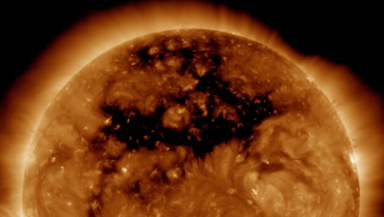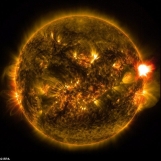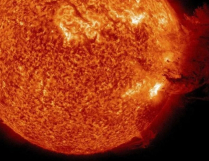
The sky has been glowing for several nights now in the Arctic Circle as a result of an enormous hole—"the size of 50 Earths"—found to have formed in the topmost layer of the sun.
The gap in the sun's magnetic field has triggered an ultrafast solar wind, or what is known to be a "geomagnetic storm," which in turn has been causing much longer and brighter auroras over the northernmost reaches of the Earth.
These glowing northern lights can even extend much farther south than usual as the coronal hole continues its slow march westward on the sun's surface.
The bright lights may become visible in Oregon, Iowa and Pennsylvania, just as earlier predicted by the National Oceanic and Atmospheric Administration's (NOAA) Space Weather Prediction Center in Boulder, Colorado.
According to Fox News, the massive solar hole was first noticed last week from a new image taken on Oct. 10 by the National Aeronautic and Space Administration (NASA)'s orbiting Solar Dynamics Observatory.
The space agency's photo of the sun's topmost layer, known as the corona, was taken at an ultraviolet wavelength. The massive gap is invisible to the naked eye observing from the Earth.
What exactly happens when a hole develops on the sun's corona? A gap in the sun's magnetic field lets loose a stream of particles, which travel fast at a speed of up to 500 miles per second.
These particles cause a geomagnetic storm, which can last for days, once they hit Earth. This storm can have an effect on radio communication and on the power and navigation for satellites, particularly if directed towards the Earth.
Coronal holes usually develop when the sun is less active in its 11-year cycle. These gaps are normally formed over the sun's poles and lower latitudes, in areas on the sun's corona with low density and temperature.
Aside from coronal holes, solar flares and coronal mass ejections can also trigger geomagnetic storms and auroras due to increase magnetic activity.















